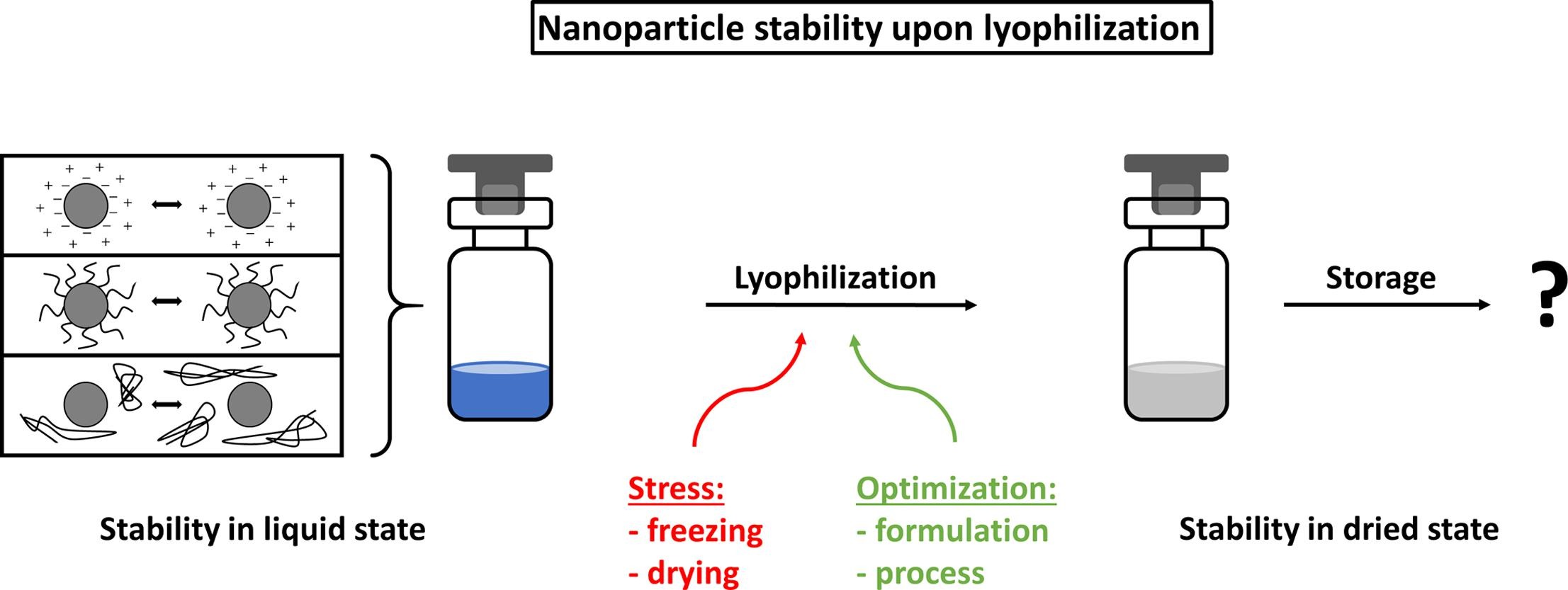Freeze-drying of nanoparticles: How to overcome colloidal instability by formulation and process optimization

Lyophilization of nanoparticle (NP) suspensions is a promising technology to improve stability, especially during long-term storage, and offers new routes of administration in solid state. Although considered as a gentle drying process, freeze-drying is also known to cause several stresses leading to physical instability, e.g. aggregation, fusion, or content leakage.
NPs are heterogeneous regarding their physico-chemical properties which renders them different in their sensitivity to lyophilization stress and upon storage. But still basic concepts can be deducted. We summarize basic colloidal stabilization mechanisms of NPs in the liquid and the dried state. Furthermore, we give information about stresses occurring during the freezing and the drying step of lyophilization.
Subsequently, we review the most commonly investigated NP types including lipophilic, polymeric, or vesicular NPs regarding their particle properties, stabilization mechanisms in the liquid state, and important freeze-drying process, formulation and storage strategies. Finally, practical advice is provided to facilitate purposeful formulation and process development to achieve NP lyophilizates with high colloidal stability.
Article information: Eduard Trenkenschuh, Wolfgang Friess. Freeze-drying of nanoparticles: How to overcome colloidal instability by formulation and process optimization, European Journal of Pharmaceutics and Biopharmaceutics, Volume 165, 2021. https://doi.org/10.1016/j.ejpb.2021.05.024.

